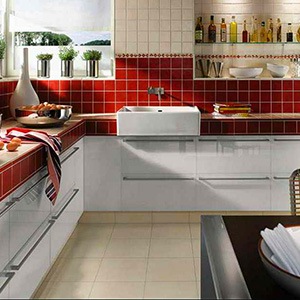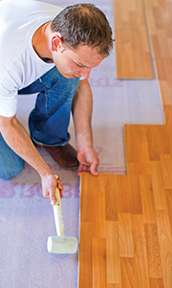The secret on how to lay laminate floors quick
and easy
we need
to share this progressive item gliding laminate wood floors. Laying laminate
floors would be an awesome choice for you to run with, in the event that you
need to spare a buck like we as a whole do in this season of retreat. Day! It’s
extremely straightforward from the principal board you cut together. Not to
stress, We here to enable you in adapting all you to need to know.
With
regards to looking incredible, straightforward establishment, on a financial
plan yet at the same time solid. Nothing approaches laminate flooring. All that
you requirement for introducing your laminate flooring dependably accompanies
simple to take after directions on the container it will make your work a
breeze. Gliding laminate floors are not appended to your current floor with the
goal that why I mean by is fast and simple.
It’s straightforward laminate floors clasp and bolts together upon connection.
How simple is that. Envision no paste or nails, to introduce this kind of
floor. Amazing, you can really confine it for any reason, so in the event that
you move your floors can accompany you. How cool is that. Let’s say you need to
offer you laminate floor. You could do as such and profit back in addition to
an introducing charge, on the grounds that after you take in the data you
assemble from this site, you will be a pro.
The
mystery behind glue less laminate flooring is each board cutting Bodenlegen
Laminat Duisburg. It’s a basic locking framework that can enable you to fit
each piece effortlessly. No all the more reasoning like the past. This is what
is to come! Consider it along these lines. Presently a day you can have it done
in the event that you can take in specific tips and traps. Time to prepare
began!
Before
you lay anything down on your solid floor. Make a point to clear the floor for
rocks or whatever else from the floor. There are a few assortments of these
liners you can browse to pick the best that suits your sub-floor. Laminate
floors have a substantial determination of that may have worked in under liner.
It’s still best prescribed to apply this clammy confirmation laminate
underlayment to your solid floors. Protection is another idea you should put
into thought. For engrossing commotion and keeping dampness out is a piece of
these laminate underlayment’s obligations. There are distinctive kinds of
commotion diminishment cover as well.
Mind the Gap
Prior to installation, it is important to
remove the baseboards on the walls of the room where you are installing your
laminate floor. Laminate installation
instructions always include “Be sure there is a 1/4″ gap between the
laminate planks, the walls and any transitions.” This space will easily be covered by the
room’s baseboards once you re-install them.
This simple process is vital to the health and longevity of your
laminate floors. Like all wood products,
laminate expands and contracts with changes in temperature and humidity. When the laminate expands, this small space
allows it to do so without buckling.
Using a 1/4 inch wide shim to verify your spacing around walls and
between transitions will keep your floors looking great for years to come.
Make Smart Transition Choices
It doesn’t matter how thick your laminate
is, even the thickest laminate has limits to how much square footage it can
cover before its structural integrity is compromised. In order to ensure the
strength of your laminate floor, it is best to install a transition at the
threshold of every room. Transitions are
spaces where molding is installed to break up the laminate flow. With a 1/4 inch space on either side of the
transition space, your floor is able to expand at a variety of conditions. This is especially important in multi-room
installations as the varying environmental conditions between rooms can wreak
havoc on the flooring. For instance, for
laminate installed in a dining room and kitchen, a transition piece in the
doorway between the two rooms will allow the flooring in the kitchen, where
temperature varies wildly, to expand at a different time and different rate
than the flooring in the dining room, where the temperature remains more
constant. Transitions from laminate to
tile, from laminate to carpet, and from laminate to laminate are available to
ensure your floor looks finished and beautiful.
Installing your laminate floor is a fast,
easy process provided you remember these two simple tips. By minding the gap around walls and
transitions and ensuring your transitions are appropriately placed, your
laminate will give your home a modern flair and will last for years to come.

Install the First Row of
Flooring
Before installing the floor, it’s important
first to calculate the width of the flooring planks in the very first row and
in the very last row. That’s necessary for a couple of reasons: First, the
floor will look much better—and more balanced—when the first and last rows are
approximately the same width. And more importantly, it’s critical that neither
row be less than half the width of one full plank. Here’s how to do the
necessary calculations:
Measure the width of the room and subtract
3/4 inch for the expansion space (3/8-inch gap along each wall). Then divide by
the room width by the width of one plank. That’ll give you the number of
full-width planks needed to cover the floor, plus the fractional width of any
remaining plank. If the remaining width is less than half a plank, you must use
a table saw or circular saw to rip down the flooring in the first row so that
the last row will be at least half a plank wide. Sound confusing? It isn’t
really. Here’s an example:
Let’s say the room is 123 inches wide, and
the plastic-laminate planks are 7½ inches wide. Subtract 3/4 inch from 123,
then divide by 7½ to get 16.3. That reveals that you’ll need 16 full planks to
cover the room, plus 3/10ths of a plank. So, if you start the first row with
full planks, the last row would be only 2-1/4 inches wide, which is 3/10ths of
a plank. In this case, it would be necessary to rip 2 5/8 inches off the first
row so that the first and last rows would each be 4 7/8 inches wide. Get it?
When setting down the first row of planks,
be sure the edge with the tongue faces the wall, and the grooved edge faces out
into the room.

How to end flooring at a
doorway
Often, there’s no avoiding ending up at a
doorway. When that happens, it’s a bit tricky because you have to slide the
flooring under both jambs. Here’s how to handle it with just a little bit of
trim carpentry.
1. Lift to fit:
Plan on a seam in the middle of the
doorway. Notch and cut the first piece to fit and then slide it completely
under the jamb. Notch the second piece so it’ll be just short of the door stop
when it’s in place. Lift the flooring to get it around the corner and under the
casing, then snap it in.
2. Slide both pieces over:
Once the two pieces are connected, slide
them both over just far enough so that both jambs cover the flooring ends.
In your home
When you lay laminate flooring in your
home, it’s important to consider whether your flooring is suitable for that
particular room. As you can see from the room suitability chart above, laminate
flooring can be installed in most areas within your home. However, rooms with
high levels of moisture require extra caution and thought. While laminate is
water resistant, it isn’t waterproof. In areas such as kitchens and bathrooms,
large spillages and prolonged exposure to moisture causes lasting damage to
your flooring.
Although it’s not advised, if you are
fitting laminate flooring in either of these two areas, ensure you clean up any
spills as quickly as possible. Laminate is also compatible with underfloor
heating. As long as the temperature doesn’t exceed 27°C, it’s able to handle
the heat without damage. For high-traffic rooms that may see a lot of people
coming and going, such as hallways and living areas, laminate’s durability
makes it the perfect choice. Its HDF (high-density fibreboard) core, as well as
a scratch-proof protective wear layer, gives it added strength.